Ergonomics in the Workplace: A Complete Guide to Office Ergonomics
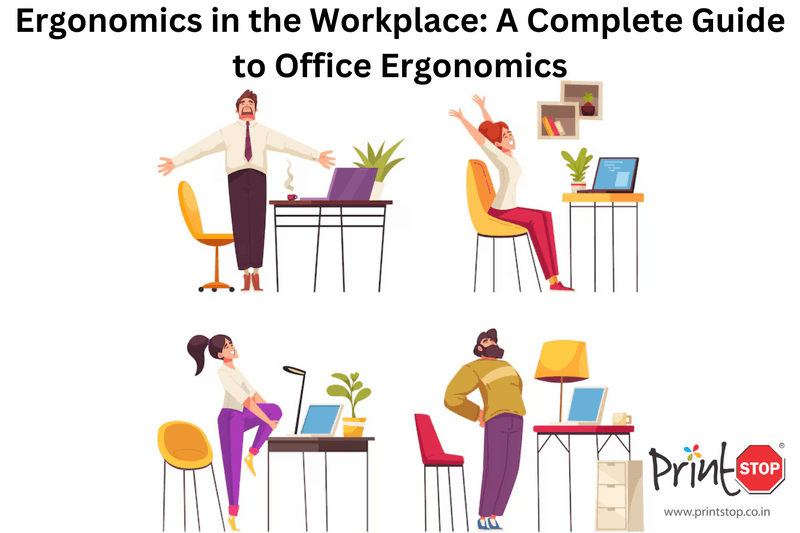
When it comes to offices and the corporate world, the employer's goal is to create an ergonomic workplace for their employees to bring out the best in them. It's more than just desks and chairs, it's about creating an environment to increase productivity as well as keeping the health of the employees in check.
In this blog, we will dig deeper into what Corporate Ergonomics is, its benefits, and how to make the workplace more efficient by using ergonomic methods.
What is Ergonomics?

Ergonomics is all about making things that work better for people. It’s about designing things – like tools, equipment, and spaces to fit with how our bodies work and how we move. The goal is to make everything as comfortable and efficient as possible, so we can do our tasks without any hassles or straining and without getting tired too quickly.
For example, let’s think about a chair.
A good ergonomic chair will support your back and keep you in a healthy position while you sit. Or consider a computer mouse. An ergonomic mouse is designed to fit your hand comfortably and will reduce the risk of strain or injury from repetitive movements.
To put it briefly, ergonomics is about how to make people and their environment work together more harmoniously to make daily jobs safer and easier.
How to set up an Ergonomic Workstation?
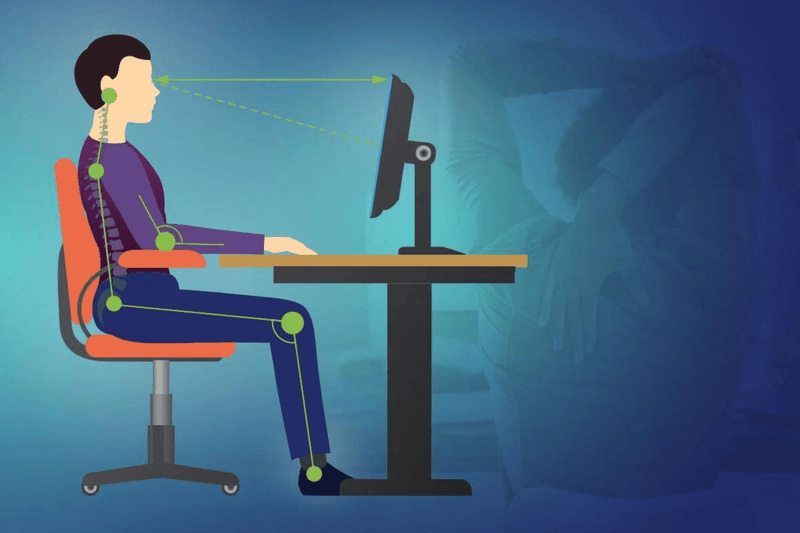
Setting up an ergonomic workstation is crucial for creating a comfortable and productive office environment. By investing in ergonomic furniture and accessories, businesses can support proper posture and reduce the risk of strain and fatigue among employees.
From adjustable chairs and desks to ergonomic input devices like keyboards and mice, every aspect of the workstation plays a role in promoting well-being and efficiency.
In this guide, we'll explore essential steps to set up an ergonomic workstation that fosters comfort and productivity.
Step 1. Ergonomic furniture investment
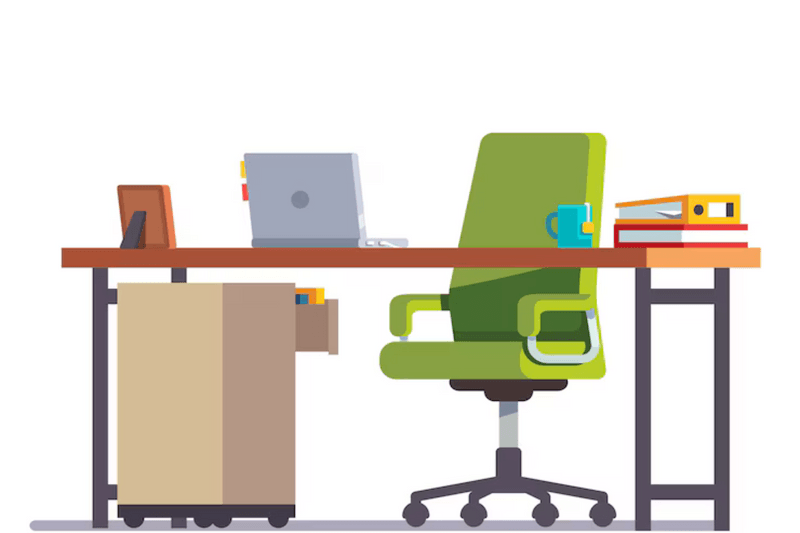
You can upgrade your workstation with suitable ergonomic furniture for the comfort and efficiency of your employees like ergonomic chairs that support your back and an adjustable table according to your need.
Invest wisely in workspace furniture because this investment will be for the long run and will help with the productivity of your employees. Investment in products like an adjustable Armrest, a Back pillow with memory foam or a Premium back pillow can make your workplace comfortable
Step 2. Adjust the Position of the Monitor

To reduce strain on your neck and eyes, position your monitor at eye level, approximately 20 to 30 inches away from your eyes. Ensure comfortable viewing by adjusting the screen to minimise glare, and consider tilting the screen slightly backwards, about 10 to 20 degrees, for optimal viewing angle.
Optimising monitor placement in this way enhances posture and productivity at your workstation, promoting a more comfortable and efficient working environment.
Step 3. Adjust Lumbar Support and Arm Positioning
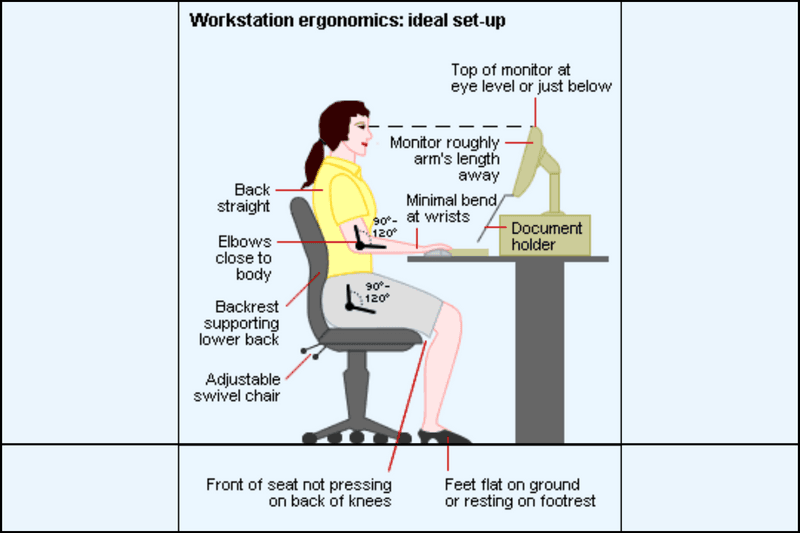
Ensure that the lumbar support of your chair is properly adjusted to maintain the natural curve of your lower back as shown in the image above, providing essential support and preventing strain.
Additionally, adjust the positioning of your chair's armrests to allow your arms to rest comfortably and maintain a relaxed posture while typing or using a mouse.
Properly adjusted lumbar support and arm positioning contribute to overall comfort and ergonomic alignment, reducing the risk of discomfort and injury during prolonged periods of sitting.
Step 4. Incorporate Ergonomic Devices

When providing ergonomic input devices like specially designed keyboards and mice, ensure they are positioned correctly for optimal comfort. Place the keyboard directly in front of the user at elbow height or slightly lower to maintain a neutral wrist position.
Keep the mouse within easy reach and at the same level as the keyboard to prevent reaching or stretching. By following these guidelines, employees can reduce strain and discomfort in their arms during extended computer use, demonstrating a commitment to their well-being and efficiency.
Step 5. Make sure the Workstation is Flexible
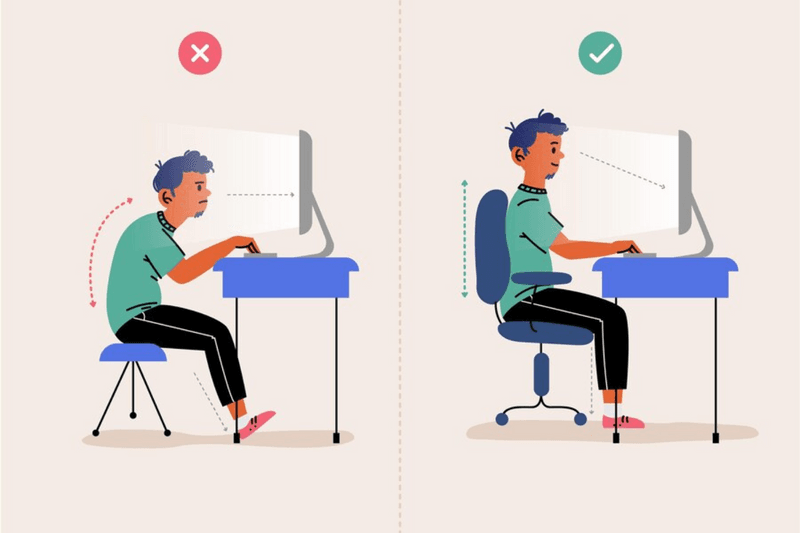
Implementing flexible workstations, including standing desks, equipped with adjustable desks and chairs, encourages employees to move their bodies and legs throughout the workday, promoting better circulation and reducing the risks associated with prolonged sitting.
Standing desks offer employees the option to alternate between sitting and standing positions, helping to reduce sedentary behaviour and alleviate discomfort associated with prolonged sitting. By incorporating standing desks into the workplace, businesses can support employee health and well-being while promoting a more dynamic and active work environment.
Step 6. Make Sure There Is sufficient Lighting

Ensure that work areas are adequately illuminated with sufficient lighting. Good lighting is essential for reducing eye strain and preventing fatigue, thus promoting a more comfortable and productive work environment. Consider incorporating both natural and artificial lighting sources to create a well-lit space conducive to focused work.
Step 7. Keep the Workspace Organised
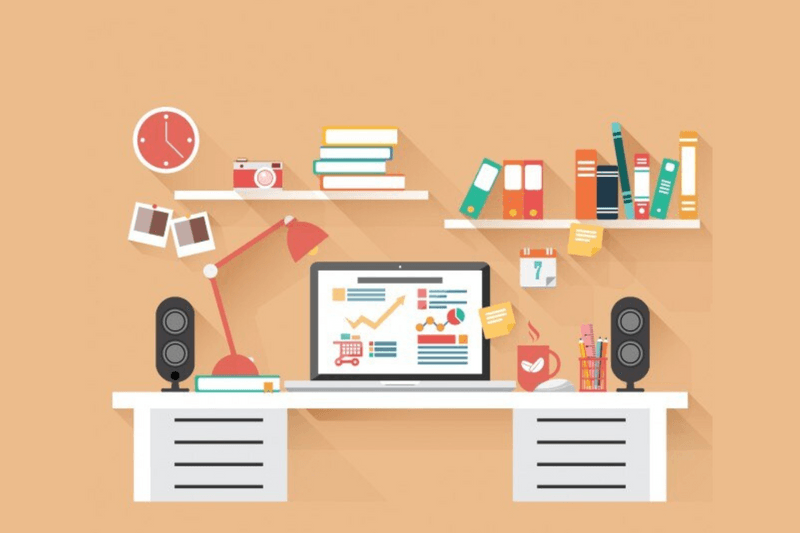
Encourage employees to keep their workspaces organised and clutter-free. A tidy workspace not only improves efficiency by reducing distractions but also enhances safety and promotes a sense of professionalism. By fostering a culture of organisation, you create an environment where employees can thrive and excel in their tasks.
Types of Ergonomic Furniture

Choosing the right furniture is critical when it comes to workplace ergonomics. Ergonomic furniture is a broad category that includes many different products made to promote good posture, comfort, and efficiency.
These furnishings, which range from desks and seats that can be adjusted to customised keyboard configurations and monitor stands, are designed to enhance productivity and well-being in the contemporary workplace. Establishing a cosy and encouraging work environment requires an understanding of the many kinds and advantages of ergonomic furniture.
1. Ergonomic Chairs

These chairs are specifically designed to provide optimal support and comfort for prolonged sitting periods. They often feature adjustable lumbar support to maintain the natural curvature of the spine, adjustable armrests to reduce strain on the shoulders and arms, and customisable seat depth and height to accommodate various body sizes and shapes.
Some ergonomic chairs also include features such as seat tilt and recline adjustments to promote dynamic sitting, enhancing circulation and reducing pressure points.
2. Height-Adjustable/ Standing Desks
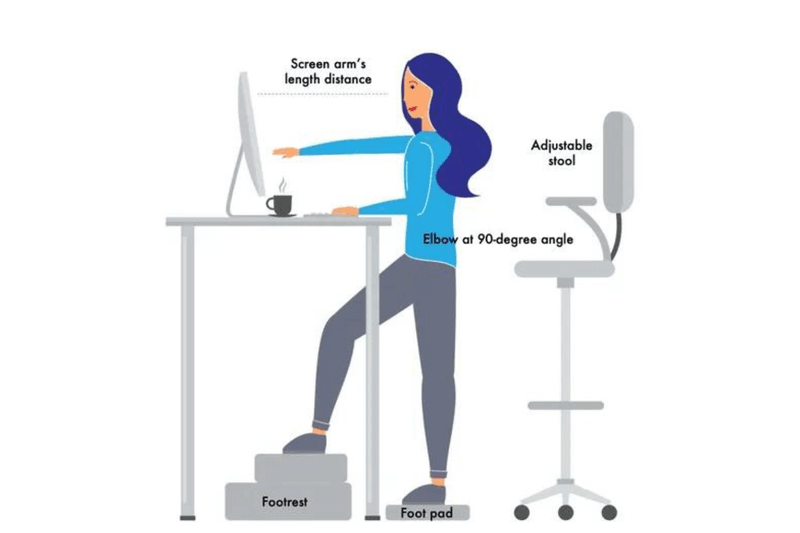
Height-adjustable desks, also known as sit-stand or standing desks, offer the flexibility to switch between sitting and standing positions throughout the workday.
By allowing users to easily adjust the height of their workspace, these desks promote movement and reduce the negative effects of prolonged sitting, such as back pain and fatigue. Studies have shown that alternating between sitting and standing can improve posture, increase energy levels, and boost productivity.
3. Ergonomic Keyboards and Mouse
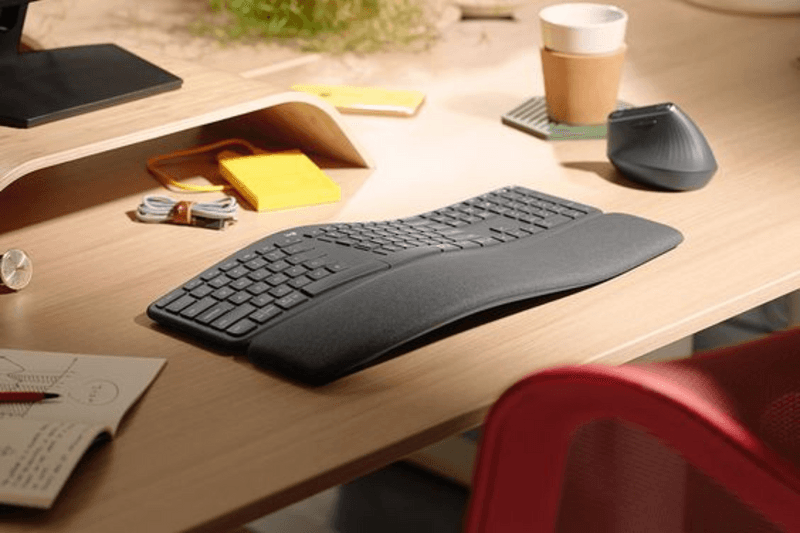
Ergonomic keyboards and mouse are designed to reduce the risk of repetitive strain injuries, such as carpal tunnel syndrome and tendonitis, by promoting a more natural hand and wrist position during typing and mouse use.
These peripherals often feature split or contoured designs to accommodate the natural alignment of the hands and wrists, as well as adjustable tilt and palm rests for added comfort. Some ergonomic keyboards also include features such as programmable keys and customisable layouts to enhance user productivity and efficiency.
4. Monitor Stands and Arms
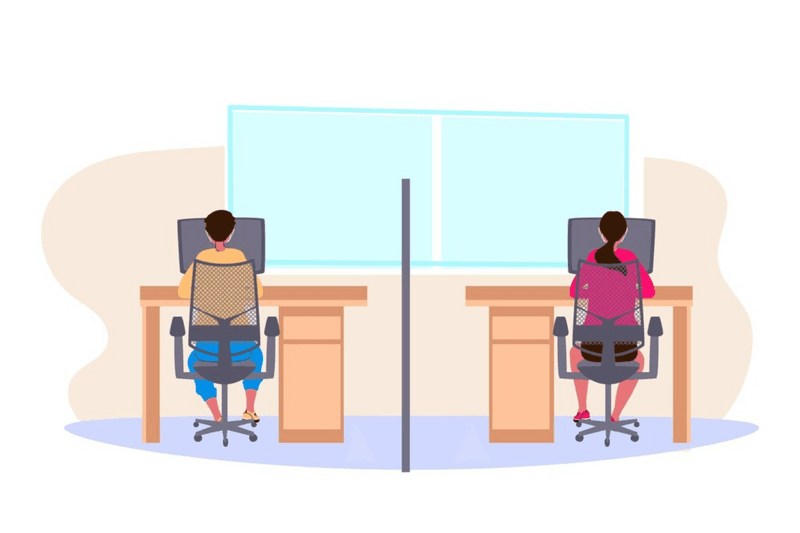
Monitor Stands and Arms are accessories that help optimise the positioning of computer monitors for improved ergonomics and comfort. By enhancing the monitor to eye level and allowing for tilt, swivel, and rotation adjustments, these accessories reduce neck strain and promote proper posture. They also free up valuable desk space and enable users to create a more ergonomic and organised workspace.
5. Footrests and Footstools
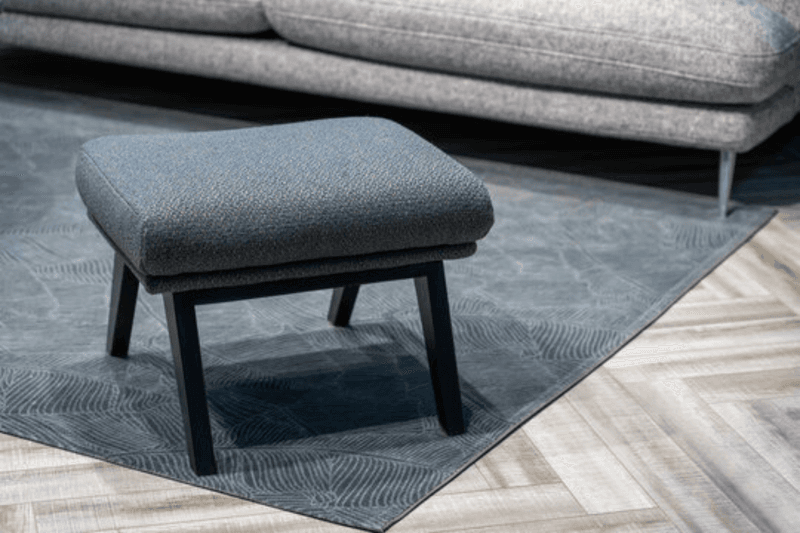
Footrests and footstools provide support for the feet and legs, helping to reduce pressure on the lower back and improve circulation while sitting for extended periods. These accessories can be adjusted to accommodate different leg lengths and sitting positions, allowing users to find the most comfortable and ergonomic posture for their needs.
6. Ergonomic Lighting
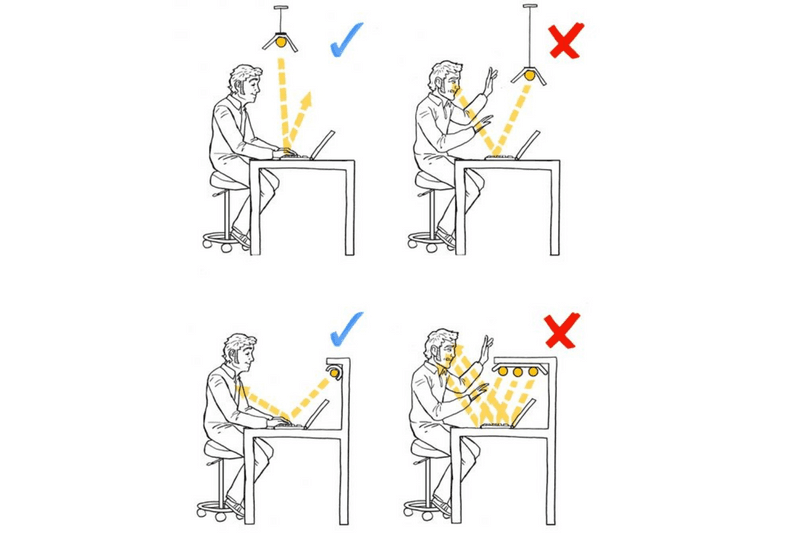
Proper lighting is essential for reducing eye strain and fatigue in the workplace. Ergonomic lighting solutions, such as task lights with adjustable brightness and colour temperature, help to provide optimal illumination for reading, writing, and computer work. By reducing glare and shadows, these lights create a more comfortable and visually pleasing work environment, enhancing productivity and well-being.
7. Wrist Supports and Cushions

Wrist supports and cushions are ergonomic accessories designed to provide additional comfort and support for the wrists and forearms during typing and mouse use. By reducing pressure on the wrist and promoting a more neutral wrist position, these accessories help to prevent repetitive strain injuries and improve overall comfort during computer work.
8. Document Holders

Document holders are ergonomic tools that keep reference materials and documents at eye level, reducing the need for repetitive head and neck movements while reading or typing. By promoting better ergonomic alignment and reducing strain on the neck and shoulders, document holders help to improve posture and reduce the risk of discomfort and fatigue during prolonged computer work.
Providing Training to Your Employees towards Ergonomics

Offering ergonomic training is a proactive measure to enhance workplace health and productivity. Through targeted sessions, employees are educated on ergonomic principles and practices. They learn to optimise their workstations, adopt proper posture, and implement safe lifting techniques.
This empowers them to prevent injuries like strains and musculoskeletal disorders, boosting overall well-being and job satisfaction. Employers benefit from reduced absenteeism, lower healthcare costs, and improved productivity.
By investing in ergonomic training, organisations demonstrate their commitment to employee welfare and create a supportive work environment. Furthermore, trained employees become advocates for ergonomic practices, spreading awareness and influencing positive change throughout the workplace culture.
In sum, ergonomic training is a strategic investment that not only safeguards employee health but also contributes to the success and longevity of the business.
Benefits of Corporate Ergonomics
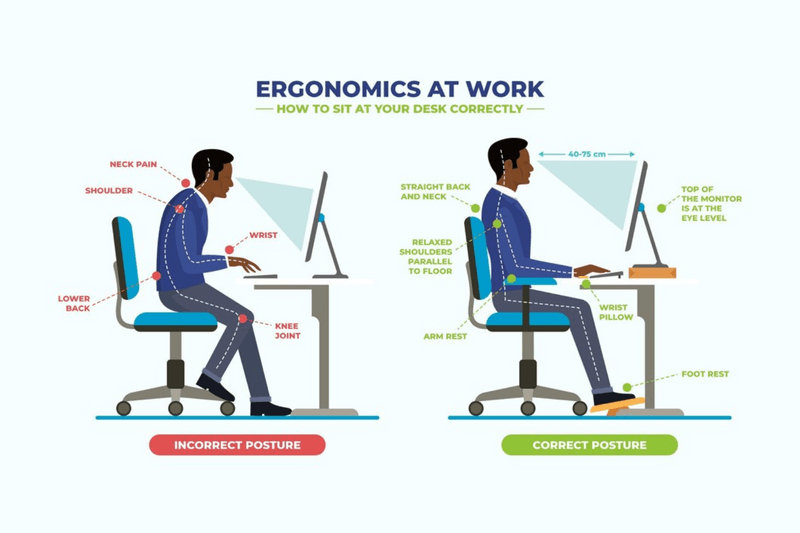
Embracing corporate ergonomics brings numerous advantages to both employees and employers alike. By prioritising the design of workspaces and equipment to fit the needs of individuals, corporate ergonomics enhances comfort, productivity, and overall well-being.
From reducing the risk of musculoskeletal disorders to boosting morale and engagement, the benefits of implementing ergonomic principles in the workplace are undeniable. Understanding these advantages underscores the importance of integrating ergonomic practices into corporate environments.
1. Increased Comfort and Efficiency
Ergonomic workspaces prioritise the physical well-being of employees, providing them with comfortable and supportive environments that reduce discomfort and fatigue. This, in turn, leads to increased productivity as employees can focus more effectively on their tasks without distractions or discomfort.
2. Health issue prevention
By implementing ergonomic practices and equipment, organisations can proactively mitigate the risk of musculoskeletal disorders and other health issues associated with prolonged sitting or repetitive tasks. This not only benefits individual employees by preserving their long-term health but also reduces healthcare costs and absenteeism for the company.
3. Increased Engagement and Morale
When employees feel supported and valued through ergonomic initiatives, their morale and engagement levels rise. By investing in their physical well-being, organisations demonstrate their commitment to employee welfare, fostering a positive and inclusive workplace culture.
4. Encouraging Inclusion and Diversity
The ergonomic design considers the diverse needs of all employees, including those with disabilities or differing physical abilities. By creating accessible and inclusive workspaces, organisations promote diversity and ensure that all employees can perform their best regardless of their circumstances.
5. Encouraging Innovation and Talent
Comfortable and ergonomic work environments encourage employees to think creatively and innovate. When individuals are free from physical discomfort and strain, they can focus more fully on problem-solving and generating new ideas, leading to increased innovation and creativity within the organisation.
6. Enhanced Image of the Brand
Companies prioritising employee well-being through ergonomic practices often enjoy a positive reputation among employees and external stakeholders. This reputation for caring about employee health and comfort can attract top talent, enhance customer loyalty, and strengthen the company's brand image.
7. Decreased loss and Incomplete Duties
Ergonomic workspaces contribute to employee satisfaction and retention by creating environments that support physical health and comfort. As a result, organisations experience lower turnover rates and reduced absenteeism, saving on recruitment and training costs while maintaining a stable and productive workforce.
Common Health Issues resulting from Poor Ergonomics

Poor ergonomics in the workplace can lead to a range of health issues that affect employees' well-being and productivity. From back pain and repetitive strain injuries to eye strain and headaches, the consequences of inadequate ergonomic practices are far-reaching.
Understanding these common health issues resulting from poor ergonomics is essential for employers to take proactive measures in creating a safer and more comfortable work environment for their staff.
Musculoskeletal Disorders (MSDs)
Musculoskeletal Disorders (MSDs) are conditions that affect the muscles, tendons, ligaments, nerves, and other soft tissues in the body.
These disorders can result from various factors, including repetitive motions, awkward postures, excessive force, and prolonged exposure to ergonomic risk factors in the workplace. Common MSDs include carpal tunnel syndrome, tendonitis, and lower back pain.
Ergonomics in the workplace plays a crucial role in preventing MSDs by optimising the interaction between employees and their work environment. Ergonomic interventions such as proper workstation setup, ergonomic furniture, and equipment design aim to reduce physical stress and strain on the body.
For example, adjusting chair height and lumbar support can promote proper posture and reduce back strain, while using ergonomic keyboards and mice can minimise wrist and hand fatigue.
Eye Strain and Fatigue
Eye strain and fatigue occur when the eyes are overworked or strained, often due to prolonged screen use, inadequate lighting, or poor posture. Symptoms include dryness, irritation, blurred vision, headaches, and difficulty focusing. These issues are exacerbated by factors such as improper screen positioning, glare from lighting sources, and prolonged periods without breaks.
Ergonomics in the workplace can help prevent eye strain and fatigue by addressing these contributing factors. Proper workstation setup, including positioning the monitor at eye level and minimising glare, reduces strain on the eyes. Ergonomic lighting solutions, such as task lighting and adjustable brightness, create a well-lit workspace conducive to reduced eye strain.
Encouraging regular breaks, adopting the 20-20-20 rule (taking a 20-second break every 20 minutes to look at something 20 feet away), and providing vision care benefits promote eye health and reduce fatigue.
By implementing ergonomic practices, organisations can create a more comfortable and productive work environment that minimises the risk of eye strain and fatigue among employees.
Back Pain and Injuries
Back pain, especially lower back pain, is a common issue stemming from strain or injury to the muscles, ligaments, or discs in the back. Factors like poor posture, repetitive movements, and inadequate lumbar support contribute to this discomfort.
In the workplace, ergonomic risk factors such as poorly designed workstations exacerbate back pain and increase the risk of injury. Ergonomics in the workplace is pivotal for preventing back pain and lower back injuries.
Optimising workstation setups, providing ergonomic furniture, and promoting proper lifting techniques are essential measures. Adjustable chairs with lumbar support and desks allowing alternation between sitting and standing positions alleviate pressure on the spine.
By addressing ergonomic risk factors and promoting ergonomic principles, organisations create safer, more comfortable work environments, reducing back pain and injuries among employees.
Headaches and Migraines
Chronic disorders known as headaches and migraines are characterised by throbbing pain in the head, which are frequently brought on by stress, bad posture, and extended screen time. Other symptoms of migraines might include light or sound sensitivity and nausea, which can continue for hours or even days.
By addressing ergonomic risk factors, ergonomics in the workplace helps avoid headaches and migraines. Ergonomic furnishings and equipment, along with a well-arranged workspace, encourage good posture and lessen shoulder and neck strain. Eye strain can be reduced by adjusting the height and distance of the display, reducing glare, and promoting frequent breaks from screen use.
By using ergonomic methods, businesses make the workplace more comfortable for workers, which lowers the frequency of headaches and migraines.
Explore Customisable Ergonomic Solutions for Workplace Comfort and Efficiency

In today’s world using customisable ergonomic tools has become essential to increase workplace comfort and efficiency. PrintStop Provides Customisable ergonomic solutions that foster a supportive and inclusive workplace culture, where employees feel valued and empowered to perform at their best.
Investing in these solutions demonstrates a commitment to employee health and satisfaction, ultimately leading to a more productive and engaged workforce.
These tools are tailored to individual needs. ensuring optimal support and alignment for each employee. From adjustable desks and chairs to personalised keyboard and mouse setups, customisable ergonomic solutions empower employees to create workspaces that promote well-being and productivity.
By offering flexibility and customisation options, businesses can address diverse ergonomic requirements and preferences within their workforce. This not only improves comfort but also reduces the risk of musculoskeletal issues and enhances overall efficiency.
Conclusion
To sum up, putting ergonomic principles first in the workplace improves inclusivity, productivity, and well-being. Tailored ergonomic solutions, ranging from training programs and lighting to furniture, show a dedication to the well-being and productivity of staff members.
This improves brand reputation, increases engagement, and lowers absenteeism. Businesses may build thriving workplaces where people feel valued and empowered to perform at their best by investing in ergonomic principles. Incorporating ergonomic concepts ultimately results in a corporate atmosphere that is more successful, productive, and efficient.